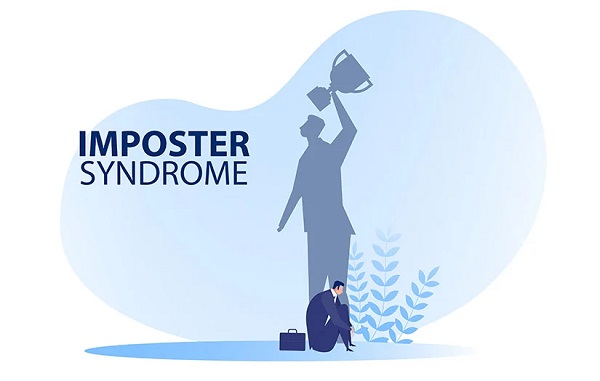By: David A. Grenardo, Professor of Law and Associate Director of the Holloran Center for Ethical Leadership in the Professions, University of St. Thomas School of Law
It took me thirteen years of teaching to figure out how I could easily incorporate professional identity formation (PIF) for my 1L students into Contracts without taking up class time or sacrificing coverage. I should have thought of it much sooner, but I blame my ineptitude on the concussions I sustained while playing college football.
Revised ABA Standard 303(b) requires law schools to provide substantial opportunities to students to develop their professional identities. PIF needs self-reflection. Indeed, the revised ABA Standard includes Interpretation 3-303(5) that acknowledges PIF requires reflection (and growth) over time, and the frequent opportunities for reflection and growth should occur in a variety of places, including law school courses.
Moments of stress where a law student acts in the role of an attorney provide the best opportunities for law students to develop their professional identity. In other words, when law students perform as lawyers, such as in clinics, externships, or role-playing in classes, students begin to feel like lawyers and understand better what it means to be a lawyer while learning what type of lawyer they want to be.
When I call on 1Ls in my Contracts class, I have them stand up on either side of the room, typically four rows up in a stadium-style seating classroom, and each student represents the plaintiff or defendant in the cases assigned. The students do not know which side they will represent until class, and I use a wheel of names that chooses students randomly.
Arguing cases in the first semester or year of law school in front of 80 or more peers, when everyone is simply getting used to law school and learning the new language of law, is stressful. The way I conduct class also places the students in the role of lawyers. This is clearly a PIF moment, but I just needed to add one simple task to help 1Ls intentionally develop their professional identities in my class: self-reflection.
The rest of the blog will provide the exercise I added and the pedagogy I employ in the class.
The Exercise
Here is the language from my syllabus that describes the PIF exercise:
I plan to call on students randomly. You can be called on during any class, including more than once a semester. After you are called on, you will complete a reflection that is no fewer than 100 words. You will email me your reflection by midnight on the same day of your recitation. The reflection must include the following: what you did well; what you can improve on; and what, if anything, you will do differently in preparation for, and/or during, your next recitation.
Recitations in class are meant to help students develop into lawyers by providing them with opportunities to improve some of the skills they will need to be successful as lawyers. Please be supportive and encouraging to your classmates as they are called on in class.
I do not give the students grades on their reflections, but the reflections are mandatory, meaning a student’s overall grade can be reduced if they fail to turn in their reflection(s). Having finally realized all I needed to do was add a short reflection to provide an intentional and meaningful PIF opportunity, I found the benefits of the exercise (both intended and unintended) to be staggering.
I will discuss those benefits after I first explain how I set up my classroom and communicate my approach and expectations to the students.
Communicating Expectations
Creating a classroom environment where students feel free to make mistakes, experiment, and find their voice is critical. I explicitly tell students on the first day of class how we will be conducting class, with the wheel of names choosing who goes for the day, and students will be representing plaintiff or defendant. I tell them how what they are doing—arguing a case in front of 80 or more people when they find out only minutes before they argue—is not normal in the practice of law. Typically, as a lawyer, one writes the motion (and reply) or opposition, prepares for weeks, knows the issues, facts, and law backwards and forwards, and then goes to argue in court or on Zoom. As noted above, I tell them that this 1L process is even harder given that, particularly in the first semester, everyone is still learning the law and trying to understand how law school works.
I tell students that I do not want to find out any of them are making fun of any of their classmates for what their classmates have done when called on in this class. I urge them to be supportive and encouraging to their classmates. Most, if not all of them, are thinking the same thing when a classmate is called on, which is the same thing my college coach used to say, “Better you than me.” Students are just glad they are not called on; they are not dissecting every single word another student is saying and looking for mistakes.
I do allow them to make fun of one person in the class: me. If they feel an unyielding urge to criticize or mock someone, I invite them to target me and me alone in class. I have occasionally shown a picture of Vegeta, an anime character, whose receding and odd hairline apparently resembles my own, at least according to my two sons. I make plenty of jokes to let students know the practice of law can be enjoyable, and sometimes the jokes reduce the tension in the room. I often say that students should not worry about saying something stupid as I say many stupid things in class all the time.
Explaining the Pedagogy
When I call on students, we first start with the rules we studied for the day. For example, if we are discussing cases involving promissory estoppel, we go through each element of promissory estoppel with examples to understand what the rule is and how to apply it.
After we have covered the rule, I ask one of the counsel to tell me the facts. I then ask the opposing counsel to add any facts at this point that they think I should know.
Next, I ask about the legal issues involved, and we begin to apply the applicable rule(s) to the facts of the case for each issue. Once we determine the correct rule, I’ll ask plaintiff to make arguments on the first element of the rule. I will then ask defense counsel for counterarguments. And the parties argue each element.
I explain to students why I use this process. We start with the rule in class because if we do not know or understand the rule, then we cannot possibly analyze the case or fact pattern properly. In a case or on the exam, there will be facts or a fact pattern that they need to be familiar with, so that is why I have someone recite the facts (in a manner that advocates for their client).
When students become lawyers and they are making a closing argument, they might (as many attorneys do) use the jury instructions to show what they need to prove or disprove, and then go through each element and argue why they prevail based on the applicable evidence and why the other party should not. On my exam, I want them to argue both sides in their analysis.
Their exam answers in my class need to be written in IRAC form, which includes the issue, rule, analysis, and conclusion. Our class entails identifying the legal issue(s), stating and dissecting the rule, analyzing from both parties’ perspectives, and discussing the conclusion(s).
Put simply, what we do in class is exactly what they will be doing in practice and on my exam. I explicitly walk them through all of this to make sure they understand what I am doing and what I want them to accomplish.
Advantages of the Exercise
Several advantages, both expected and unexpected, came from the exercise. One, students were able to reflect on a formative experience that helped them understand what type of lawyers they were going to be and wanted to be. For example, those who were well-prepared discussed how much that meant to their performance, while those who were not as well-prepared lamented how they must improve in that area. The best lawyers are well-prepared.
Two, the exercise gave students something to feel positive about themselves. Most students recognized at least a few things that they did well, and I was able to affirm them through this exercise. Law school can often be devoid of positive reinforcement for law students during the 1L year. Early responses to students’ work in law school usually involve numerous red marks on their initial legal research and writing papers. By requiring each student to write a reflection, the students and I could recognize something positive they were doing as soon-to-be lawyers.
Three, I caught several people suffering from imposter syndrome. This was not my intent, but it was a positive unintended benefit. A handful of students reflected that they did nothing well, despite classmates telling them otherwise. Prior to doing this exercise, I did not always comment on how each student performed in class. I tried to catch students after class or in the hallway at some point, but I was not always successful. With the reflection, I make sure I respond to each student with some type of positive affirmation.[1]
For the folks who claimed they did nothing well, I gave them some tangible examples of what they actually did well—they had the facts down cold, meaning they were well-prepared, which is a trait of great lawyers; they analyzed certain rules or elements effectively; they showed poise and composure; they demonstrated professionalism throughout their recitation; they showed an amiable and/or likable personality, which will endear them to a jury or judge. Honest, positive critiques helped law students feel good about themselves and confident that they chose the right profession.
Four, law students in my class start to really feel like lawyers after they have stood up and argued in front of their peers. They have a sense of confidence that they can do the part of the job that requires them to advocate for their clients. And for the students who go twice, which was nearly all of them last year, they often reflected on how they appreciated the opportunity to improve with a second chance.
Finally, the last major benefit of the exercise related to jobs. When a student asked me to be a reference or write a letter of recommendation for them, I could go back to their reflection and my response to them to find solid evidence of something positive the student did (besides just their grade) that I could then relay enthusiastically to potential employers. I did not see this benefit coming, but it has been invaluable.
Advantages of the Wheel
The wheel removed bias from my cold-calling in class. In previous years, I would call on easy names to pronounce on the first day of class to avoid proving my stupidity too early in the semester. In the past, I might also be inclined to call on students I perceived to be smarter on harder cases, thereby precluding other students from the chance to show their abilities. The wheel possesses no bias, or at least it does not possess mine.
I also use the wheel to teach another valuable characteristic of a lawyer—being on time or, better yet, being early. When I attended a football camp at the University of Notre Dame when I was in high school, Notre Dame’s head football coach at the time, Lou Holtz, said that if you’re five minutes early, then you’re ten minutes late. As high school football players, it took us many weeks to decipher what Coach Holtz was trying to tell us. He meant that you need to be fifteen minutes early to be on time. Lawyers can be sanctioned for showing up to court late. In addition, showing up late demonstrates a lack of civility as it indicates to the client, opposing counsel, judge, or whomever you are meeting with, that you do not respect their time. I communicate this aspect of being a lawyer to the students, and I spin the wheel fifteen minutes before class. Students tend to arrive at least fifteen minutes before class starts.
You might be wondering what I call this magical wheel of names. I have two monikers for it—the wheel of fun, and the wheel of opportunity. Students, at the beginning of the semester, called it the wheel of death and the wheel of torture. This brings me to an important question: isn’t this wheel too stressful and anxiety-inducing for the students? In my class, I want to help prepare students for the practice of law. The practice of law can, at times, be extremely stressful and anxiety-inducing. I make a lot of (outstanding) jokes in class and try to create a fun, supportive environment, but make no mistake: I know this is stressful, and I want it to be stressful. When a student told me that the experience of the wheel helped them defend their client as a certified student attorney this past summer, that tells me this is all worth it. I am not trying to remove all stress from my class. In fact, I want students to expect stress, face it, and work through it, which is what they will need to do as attorneys if they want to be successful.
This exercise does not take away from class time or reduce course coverage. I highly recommend it, or some form of it, to anyone teaching a doctrinal 1L course.
Should you have any questions or comments about this post, please email me at gren2380@stthomas.edu.
[1] Two students (one representing plaintiff and the other the defendant) cover one case. We usually have one to three cases assigned for each class period. If we have three cases in a day, then I will receive six reflections. Thoughtfully responding to six students via email does not take a lot of time.

David Grenardo is a Professor of Law and Associate Director of the Holloran Center for Ethical Leadership in the Professions at the University of St. Thomas School of Law.



